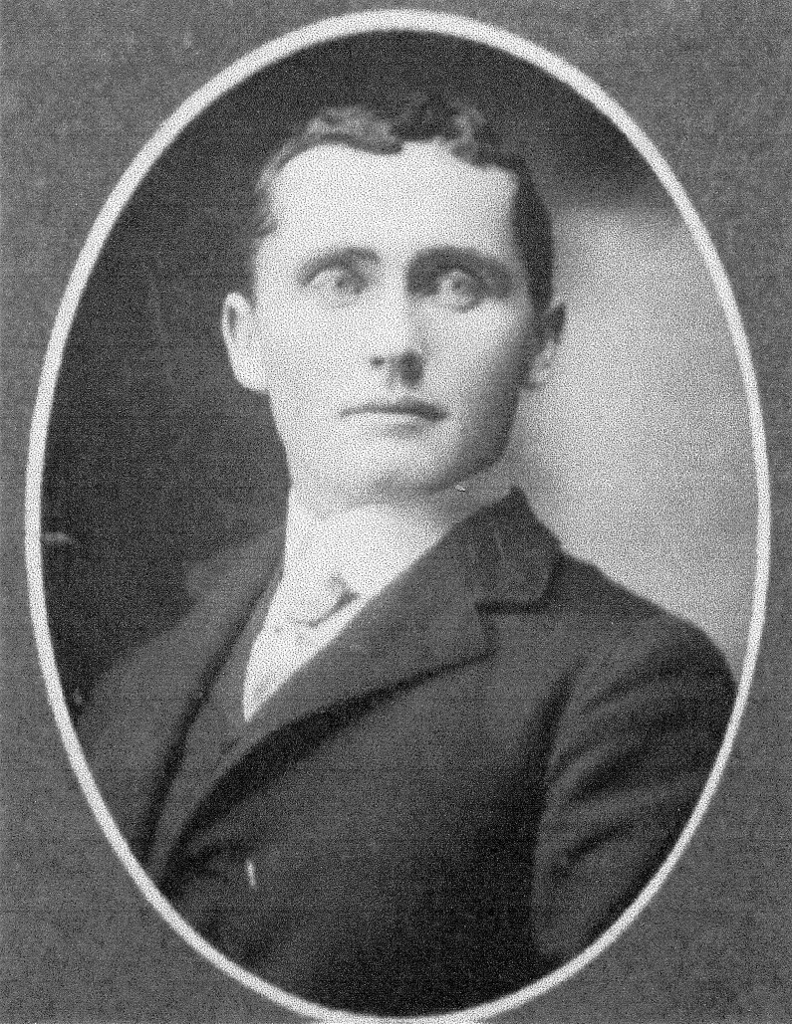
Walter Ottosen circa 1920. Photo courtesy Carol Dixson
Manistique’s longest serving light keeper, Walter Ottosen, was born at Washington Island, Wisconsin on July 18, 1876. He was the youngest of three surviving children born to Danish immigrants, Lars Peter Ottosen and Marie (Nielson) Ottosen. Walter’s siblings included eight year old George and four year old Morris. Walter never knew his mother who died when he was a small child in October of 1878.
Lars Ottosen worked as a cooper, making barrels for fishermen to preserve their catch in salt brine. Unable to both care for his young family and earn a living, Ottosen sailed to Rowley’s Bay on the Door Peninsula. There he found Christine Pedersen and convinced her to return with him to Washington Island to care for his three young sons. Christine and the boys bonded almost immediately, forming a loving and nurturing relationship. Lars and Christine were married less than a month later on July 4, 1879.
When Walter was 12 years old, the family moved from the fishing village to a farm on Washington Island, where he spent the remainder of his boyhood years. With the outbreak of the Spanish American War in April of 1898, Walter enlisted in the 3rd United States Infantry and went into training camp at Fort Snelling, Minnesota. Walter’s unit sailed for Cuba from Mobile, Alabama on June 22, 1898. During the campaign in Cuba, Ottosen participated in the battles of El Caney, Santiago and San Juan Hill. With the end of the fighting, Ottosen was placed on sentry duty, guarding Spanish prisoners of war.
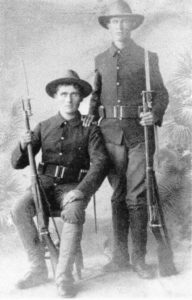
Walter Ottosen (left) in Spanish Am. War era uniform. Photo courtesy Carol Dixson
The 3rd Infantry was returned to Fort Snelling at the close of the campaign in Cuba. Two weeks later, Ottosen and 85 men from his company were dispatched to Leech Lake, Minnesota, to put down an Indian uprising. Chippewa tribal members believed that they were not receiving fair prices from the lumber companies for timber cut on reservation land. Other long standing grievances simmered beneath the surface. The conflict boiled over into a violent skirmish on October 5, 1898. The company’s losses included one officer and five enlisted men killed and ten others wounded. Casualties among the tribal members were undetermined, but at least one individual was killed.
Following the skirmish at Leech Lake, the 3rd Infantry was sent to the Philippines where the regiment participated in the battles of Malolos, San Isidro and Luzon. During this campaign, Ottosen was wounded in the right arm and also became ill with tropical fever. He was sent to a hospital in San Francisco with six months remaining on his three year enlistment. After he recovered, he served out his time in the army as a guard at Alcatraz military prison.
While stationed at Fort Snelling, Walter met and fell in love with Althea Current. The couple was married on November 10, 1902 and started a family.
Ottosen entered the lighthouse service in 1903 at Manitowoc before going to Kenosha as assistant keeper. He also served as an assistant keeper at Rock Island and Menominee. He was promoted in 1912 and assigned as the light keeper at Pilot Island, a rocky, isolated outpost in Lake Michigan. Althea and the older children lived on nearby Washington Island so the children could attend school. Walter looked after the younger ones on Pilot Island. By 1920, the family had grown to include eight children.
The death of light keeper Charles Corlett in 1920 created the vacancy for Ottosen to transfer to Manistique as head light keeper. The Manistique lighthouse was built in 1916 and became operational on August 17, 1916. It stood at the end of the east breakwater. A two-story duplex was built at the end of Range Street as a keepers’ residence, 1200 feet from the inner end of the east breakwater.
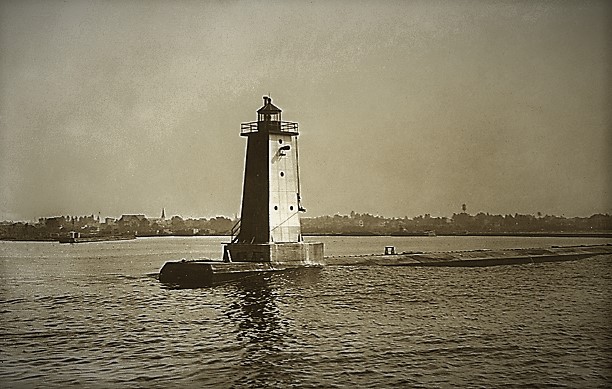
The newly constructed Manistique Lighthouse pictured here in 1916.
Althea Ottosen had been growing increasingly dissatisfied in her marriage, leaving Walter and the children for the first time in 1925. Several more separations followed before the marriage finally ended in divorce on April 20, 1928. Walter was granted custody of the couple’s four remaining minor children. Walter had been raising these children alone for the past three years, and once the divorce was finalized he sought a new wife. Walter reportedly found his second wife, Roseline (Webb) Taylor, through either a newspaper or magazine ad. Walter drove to Canada to bring Rose and her daughter Kathleen back to Manistique. The couple was married in Manistique on September 7, 1929. The Ottosen children became very fond of Rose and their new step-sister Kathleen. Rose enjoyed cooking and baking for the children and entertaining her friends from church. Kathleen loved to play classical music on the piano.
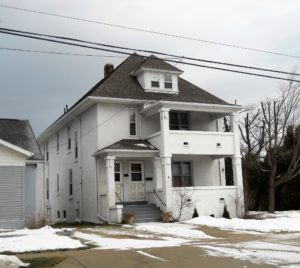
The former keepers’ home on Range Street is now a private residence.
Walter Ottosen spent a total of 38 years in the lighthouse service, retiring on October 1, 1941. He received the efficiency star for excellence in operating the lighthouse at Manistique for five consecutive years prior to his retirement. Ottosen and his wife Rose moved to Florida after his retirement. Rose passed away in 1949 and Walter died on March 27, 1960 at age 83.
Light keepers in Manistique included: Charles Corlett (1917-1920), Walter Ottosen (1920-1941), Walter Hansen (1941-1947), Thomas Brennan (1947), William Kellar (1947-1952), Anton Jessen Jr. (1952-1954) and Peter Scott (1954-1961).
First Assistant light keepers included: Thomas Nelson (1914-1917), William Renier (1917-1921), Raymond Buttars (1930-1941), Earl Malloch (1941-1942), Samuel Anderson (1947-1956) and William Schult (1956). Bert Walthers served as 2nd Assistant light keeper from 1934-1941. The light was fully automated in 1969.
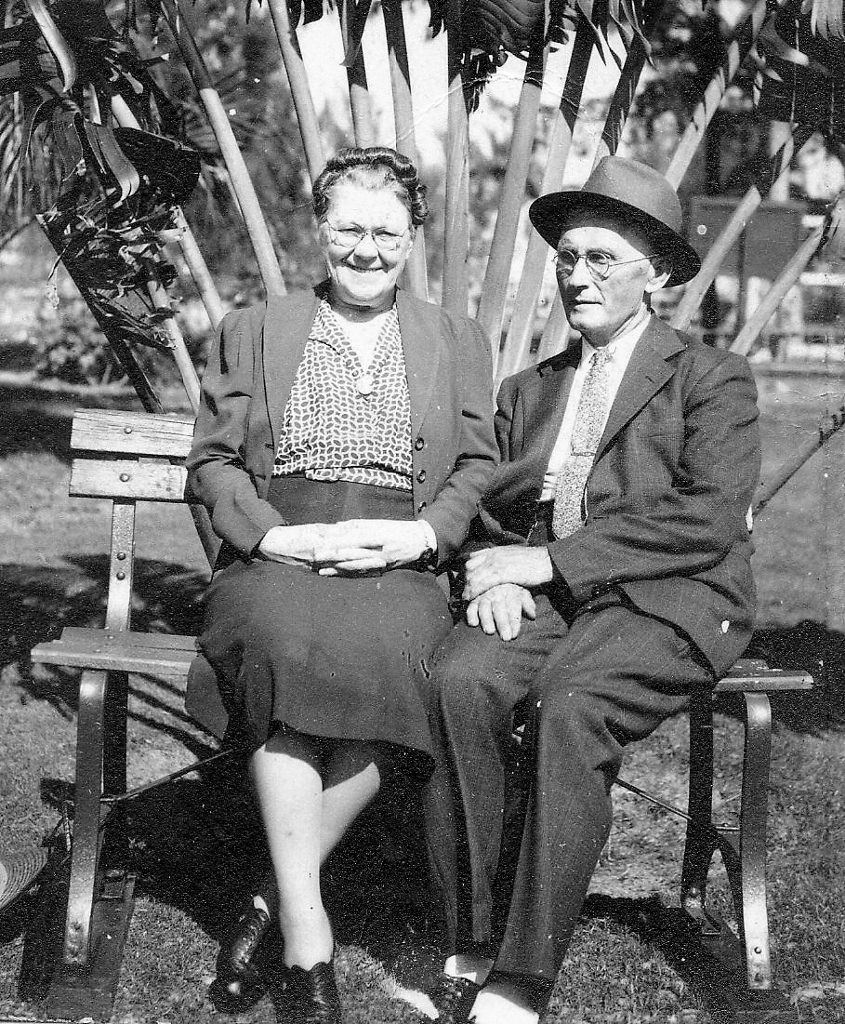
Walter and Rose in retirement. Photo courtesy Carol Dixson.
